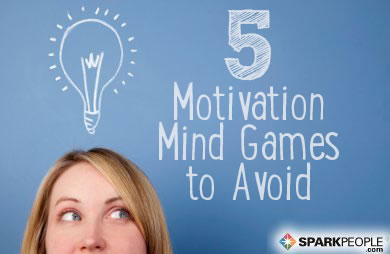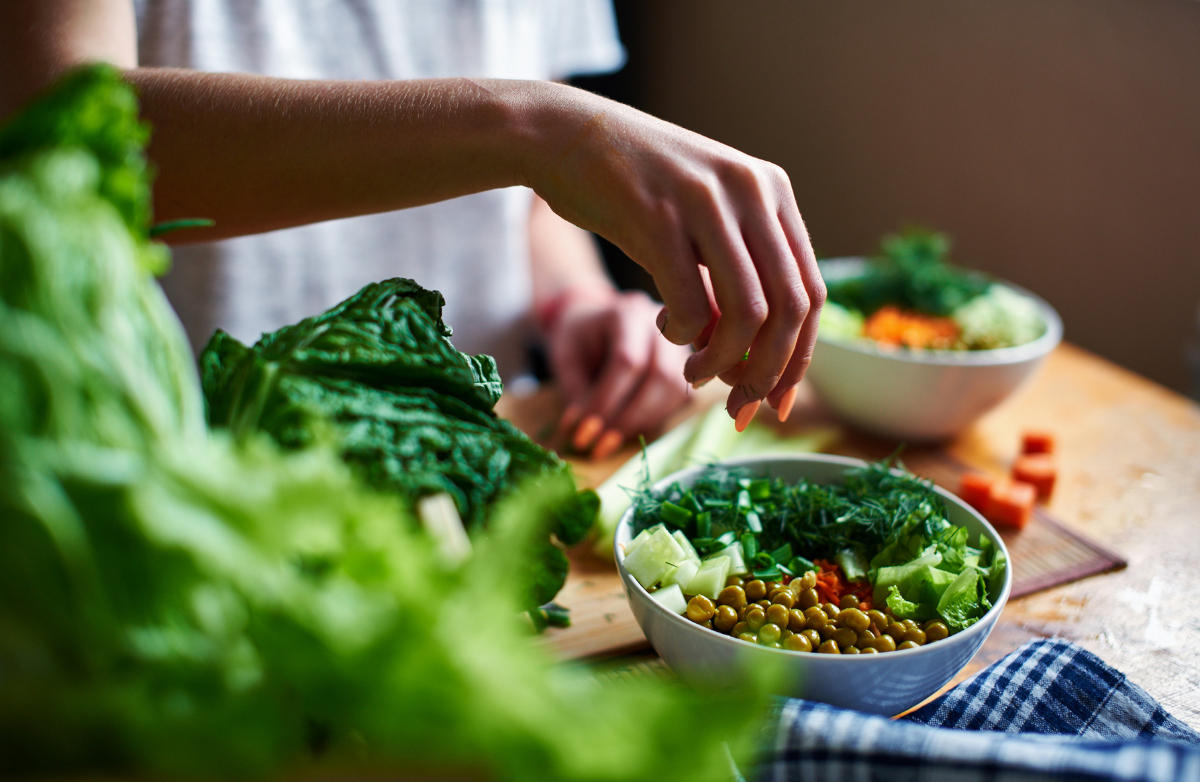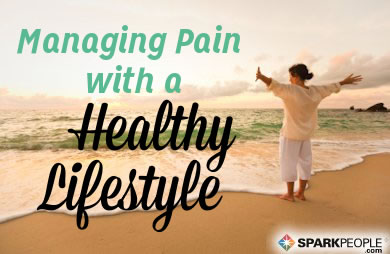|
There's more to healthy eating and weight loss than simply tracking your food. The way you think about food, respond to hunger, and deal with cravings also affects your diet and overall health. Look up ''crave'' in the dictionary and you will find that it means ''to long for; want greatly; desire eagerly.'' So, it makes sense that you don’t usually crave specific foods due to physical hunger; cravings are often complex and happen for a variety of reasons, both physical and emotional. There is a big difference between a craving and actual hunger. But cravings are not necessarily ''bad.'' They are normal and can have a place in any healthy lifestyle. However, constantly giving in to your cravings can lead to overeating and an unbalanced diet. Learning to satisfy your cravings in a controlled manner will keep your relationship with food in balance. Here are some common scenarios when cravings tend to strike—and how to bust them in a healthy way. |
| Instead of: | Try: | Or: |
| Regular potato chips straight from the bag | One pre-portioned serving of regular potato chips | One pre-portioned serving of baked potato chips |
| Countless chocolates from the candy bowl at work | One pre-portioned serving of chocolates from the candy bowl at work | A couple squares of dark chocolate, laid out on a plate |
| Ice cream straight from the carton | One scoop of ice cream in a bowl | One scoop of lower-fat ice cream or frozen yogurt in a bowl |
| A medium pizza | Two slices of pizza | A personal-size pizza made with a pita bread crust and piled with veggies |
| A large bowl of pudding (or other creamy dessert) | A small bowl of pudding (or other creamy dessert) | A serving of Greek yogurt with berries and a drizzle of honey |
| A large milkshake | A small milkshake | A smoothie made with fruit and low-fat milk |
| Multiple chunks of baguette, topped with unmeasured butter | One piece of baguette, topped with one serving of butter | A piece of whole-grain bread, dipped in a drizzle of olive oil and herbs |
| A large latte with whipped cream | A small latte with no whipped cream | A hot cup of tea |
| An entire bowl of pasta from a restaurant | Half a restaurant portion of pasta | A homemade dish made with spaghetti squash instead of pasta |
| A large order of French fries | A small order of French fries | A serving of homemade baked fries |
Craving culprit: You always crave foods at a specific time.
Bust it! Many people find themselves craving food at night time, or while they’re doing a specific activity (like watching TV). Track your cravings to help you notice patterns. If you tend to crave certain foods at night, always have a nutritious snack planned for the evening. Or, take up a nightly hobby that gets you out of the house and away from the kitchen, like taking an after-dinner walk with your family. If your cravings accompany an activity, try to associate that activity with something other than food. For example, if you always crave popcorn while watching a movie, try doing something else to keep your mouth and/or hands busy, like chewing gum, knitting, or squeezing a stress ball.
Craving culprit: You crave something simply because it’s in front of you.
Bust it! Always have snacks on hand in places where you know food might tempt you. Do donuts always seem to show up in the break room at work? Keep a stash of healthier snacks in your desk to munch on instead. Do you get hit with fast food cravings while on the road? Take something healthy with you to munch on in the car. By anticipating those triggers, you’ll be more prepared to face your cravings head-on.
Craving culprit: You crave foods for emotional reasons (stress, sadness, boredom, etc.)
Bust it! Stress can be a big trigger that causes people to overeat. Try taking a few minutes to de-stress before you reach for a bag of chips to see if reducing your stress curbs that impulsive desire. If you find you want to eat when you’re not hungry due to boredom, try getting outside for a walk or spending at least 10 minutes on an elliptical or treadmill. Try walking up and down the steps a few times, or soak in a hot bath. By doing an activity instead of immediately reaching for the food, you'll get your mind off the craving and onto something more productive.
Hungry for more tips? Check out these craving-busting ideas!
- Sometimes, dehydration can set off cravings. If you think you could use more fluids, keep a water bottle with you at all times, or try sipping on salt-free seltzer water with lemon or lime to fill you up and hydrate.
- Veggies are the perfect way to curb a crunchy craving. Carrots, celery, and bell peppers dipped into low-fat dressing make a satisfying snack. Ever try cherry tomatoes to fill a craving? They are sweet and good for you. They can also make a great topping for low-fat cottage cheese.
- Remind yourself that just because you crave something doesn’t mean you have to have it. NOTHING will happen if you don't give into the craving—but you might regret it if you do and go overboard!
- Try having a small serving of what you crave and take a long time to savor it. Instead of gobbling down a chocolate bar, take a quarter of it and see how long it can take you to eat it. Savor each and every delicious bite to feed your soul while you feed your craving.
- Some people who follow a reduced-calorie weight-loss plan struggle with hunger that gets confused with cravings. Eating more frequently throughout the day can help with feelings of fullness and satiety and diminish hunger and cravings.
- Go for volume! Eating more water-rich, low-calorie foods will help fill you up for minimal calories when a craving hits. Consider soup as an option, especially when you have a craving for something salty. Soup is a high-volume food that is often low in calories when it is broth-based. Choosing a low-sodium variety will still curb your salty tooth without spiking your sodium intake for the day.
- Drink peppermint or apple cinnamon tea. Certain teas have a natural sweetness from fruits and herbs and can help curb a sweet tooth for little to no calories. Plus, the warm liquid will help you feel full until your next balanced meal.
- Many of us crave chocolate on a regular basis. Selecting calorie-controlled chocolate fixes will satisfy your cravings without putting a dent in your calorie budget. Consider a cup of low-fat chocolate milk or a serving of a fat-free chocolate Jell-O pudding cup as a nutrient-rich option for your next chocolate craving.
- Make sure you’re eating enough! If your body isn’t getting enough calories and nutrients, you could be setting yourself up for persistent food cravings. Make sure you’re tracking your food and and consistently hitting all of your appropriate levels for the day.
- Get enough sleep. Sometimes, food cravings can be brought on by fatigue, so make sure you’re getting at least 8 hours of shut-eye per night to get a handle on your cravings.
More From SparkPeople
-
 Crockpot Chicken Taco Stew
Crockpot Chicken Taco Stew -
 Whole Wheat Pasta with Sesame Peanut Sauce
Whole Wheat Pasta with Sesame Peanut Sauce -
 Jalapeno Popper Stuffed Chicken Breasts
Jalapeno Popper Stuffed Chicken Breasts -
 Low-Fat Eggplant Parmesan
Low-Fat Eggplant Parmesan -
 Diabetes-Friendly Recipes
Diabetes-Friendly Recipes -
 Is Weight Loss Hurting Your Relationship?
Is Weight Loss Hurting Your Relationship? -
 5 Mind Games You Need to Stop Playing
5 Mind Games You Need to Stop Playing -
 Are These 8 Common Nutrients Missing From Your Diet?
Are These 8 Common Nutrients Missing From Your Diet? -
 "I Stopped Medicating Myself with Food"
"I Stopped Medicating Myself with Food" -
 ''I Overcame Grief and Self-Doubt by Running''
''I Overcame Grief and Self-Doubt by Running''


.png)







.png)
